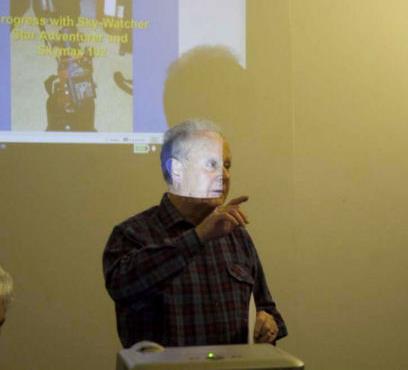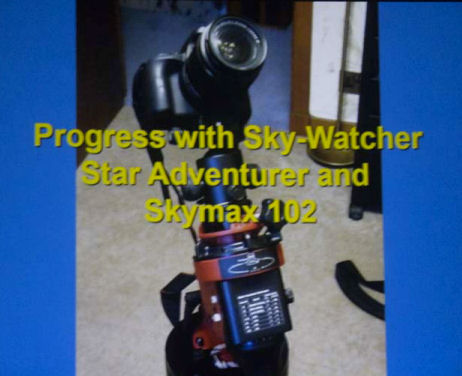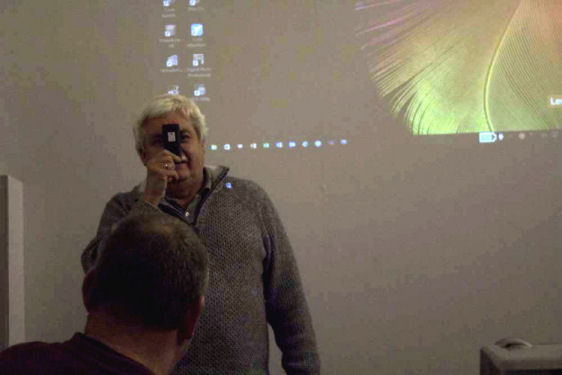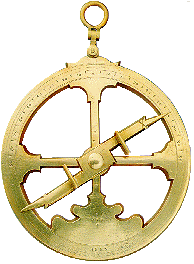26th February 2016 – Matjaz Vidmar – Edinburgh University.
"What Has Space Ever Done For Us?"
MatJas Vidmar: BSc (Hon) Physics, MSc SaTiS
Postgraduate Research Student, University of Edinburgh Science, Technology, Innovation and Entrepreneurship UK Space Sector and Innovation
Astronomical research is both driving the technological advances as well as being shaped by them. From Mayan temples to modern computer simulations, the practice of Astronomy is very much rooted in physical objects – most of them located down here on Earth!
This talk will afford a fly-by tour of the key astronomical technologies, how did they come about and what did they do for the science as well as for the society.
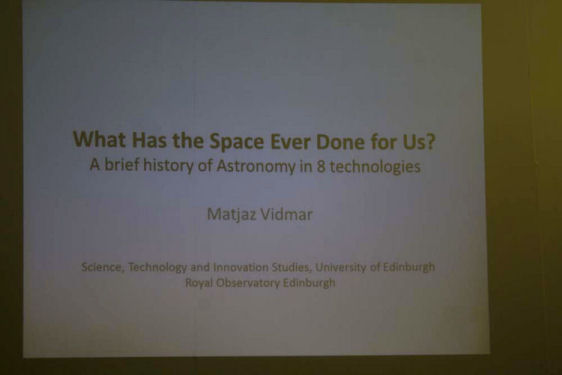
Matjaz took us on a journey showing how milestones in astronomy have advanced science. From the earliest times neolithic monuments such as Stonehenge and other circles throughout the UK, as well as the pyramids and the ancient Mayan civilisation have advanced the concept of Astronomical calendars, both Lunar and Solar, and time. These monuments had a practical purpose for the builders as they were able to calculate when to sow crops and the best times to harvest them.
Another milestone Matjaz described was how scientist such as Copernicus using geometry and mathematics demonstrated the order of the universe, finally dispelling the religious belief that the Earth was the centre of the entire universe.
The ability to make and keep records, books and later photographs, was an important step as it meant astronomers were able to build on earlier works.


Matjaz discussed how Newtons work on the properties of light directed through prisms and Herschel’s discovery of infra red in the form of heat energy existing beyond the visible spectrum and advances in the power and sensitivity of instruments led to the discovery of radio waves, micro waves and x-rays.
Astronomers also helped to develop early computers into the massively powerful tools they are today. Travelling beyond the bounds of Earth was a defining moment allowing scientists to look back and study the nature of the planet.
Matjaz was keen to stress that the Scottish Royal Observatory has been, and continues to be at the forefront of astro and scientific discovery, and concluded the talk with an example of ongoing work at the observatory into a superfast, high precision tracking for use in an infra red camera that can be used in retinal mapping to determine macular degeneration.
Throughout the talk examples of what astronomy has given us were discussed. Radio and television as well as remote controls, computers, satellite communication and navigation were among the obvious, but more importantly were the medical advances. X-ray machines, CT and MRI scanners being perfect examples.
Our thanks to … for an excellent talk with many illustrations.
Above is tthe complete talk by matjaz, and is approximately one hour long.
Press the play button to hear online now or right click to download and save.
The introductions of approximately two minutes duration were not recorded due to a technical error. Matjaz forgot to switch the voice recorder on.
After a short break Ken Kennedy showed some pictures taken with his skywatcher setup.
Following Ken, Nathan "Skulley" Brookes described his recent trip to Norway this month to see the Northern Lights. Unfortunately the weather was not very good and he was unable to take any pictures. A friend however did provide him with one. If you're reading this, can we use the picture please, Skulley.
Finally Our Director of Observations, Jim, gave a brief slideshow of what to expect and look out for in March.
Matjaz Vidmar





